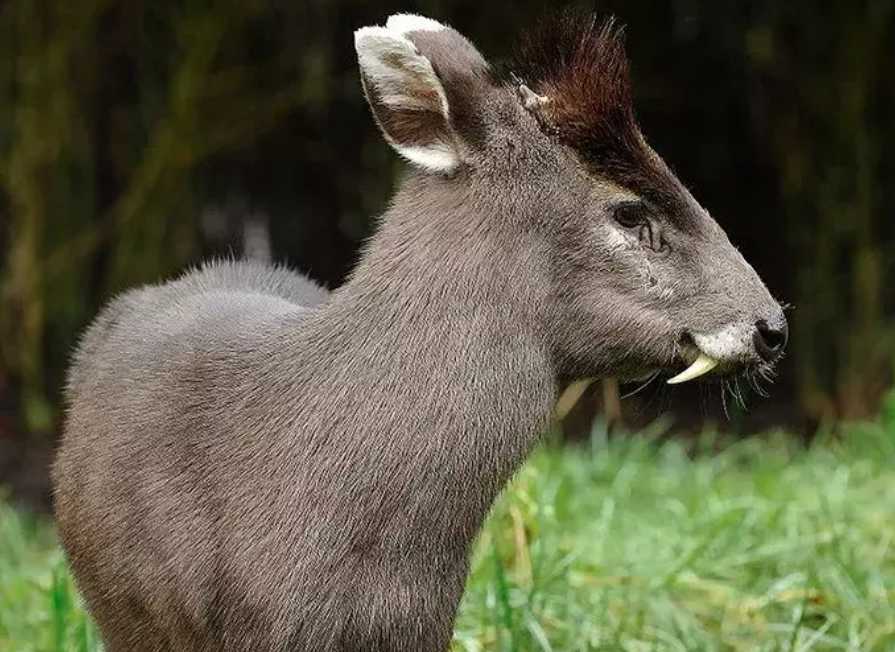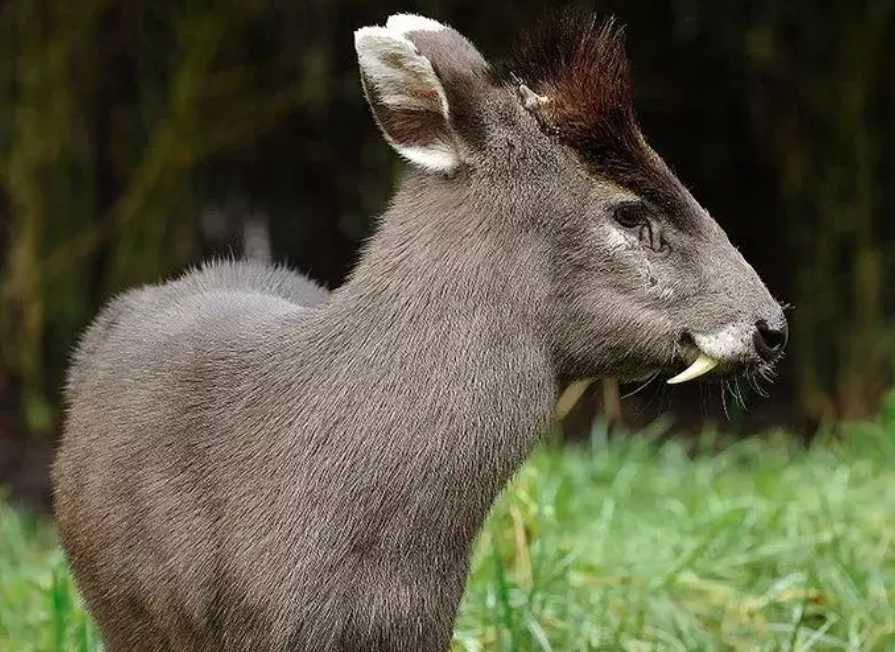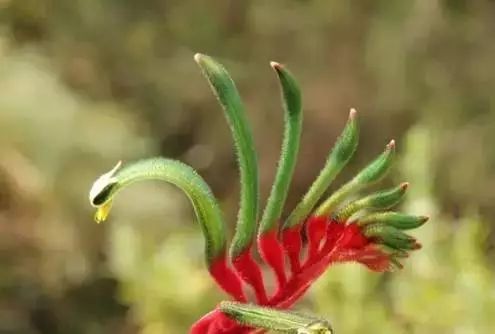Tufted Deer: A Small, Elusive Deer Species Discovered in Central China
Nestled within the mountainous forests of central China roams a diminutive deer species that captivates with its unique appearance and elusive nature. The tufted deer (Elaphodus cephalophus), named for the distinctive tuft of black hair atop its head, stands out as a rare gem among the diverse wildlife of Asia, blending distinctive features with a secretive lifestyle.

Source: Images from the Internet, if there is any infringement, please contact the removal of
Distinctive Features and Adaptations
The tufted deer's most striking characteristic is the prominent tuft of long, dark hair that cascades over its forehead, giving it an almost human-like expression. Males also sport short, sharp tusks that protrude from their upper jaws, resembling vampire fangs—a feature used in territorial disputes and mating competitions. Measuring around 1 meter in length and weighing between 16 to 37 kilograms, these deer are well-adapted to their forest habitat. Their dense, brownish-grey coat provides excellent camouflage among the underbrush, while their agile bodies allow them to navigate steep, rocky terrain with ease. Active primarily during dawn and dusk, tufted deer feed on a diet of leaves, twigs, and grasses, using their keen senses to evade predators like leopards and dholes.
The tufted deer's most striking characteristic is the prominent tuft of long, dark hair that cascades over its forehead, giving it an almost human-like expression. Males also sport short, sharp tusks that protrude from their upper jaws, resembling vampire fangs—a feature used in territorial disputes and mating competitions. Measuring around 1 meter in length and weighing between 16 to 37 kilograms, these deer are well-adapted to their forest habitat. Their dense, brownish-grey coat provides excellent camouflage among the underbrush, while their agile bodies allow them to navigate steep, rocky terrain with ease. Active primarily during dawn and dusk, tufted deer feed on a diet of leaves, twigs, and grasses, using their keen senses to evade predators like leopards and dholes.
Conservation Challenges and Ecological Significance
Endemic to China, the tufted deer inhabits fragmented pockets of forest in provinces such as Sichuan, Hubei, and Yunnan. Despite being listed as Near Threatened by the IUCN, the species faces significant threats from habitat loss due to deforestation, logging, and agricultural expansion. Illegal hunting for its meat and body parts also poses a major risk to its survival. Conservation efforts, including the establishment of nature reserves and anti-poaching initiatives, are underway to protect these unique deer. As an indicator species of forest health, the survival of tufted deer is crucial for maintaining the ecological balance of China's mountain ecosystems. Each sighting of this mysterious creature not only offers a glimpse into the country's rich biodiversity but also underscores the urgent need to safeguard its remaining wild habitats.
Endemic to China, the tufted deer inhabits fragmented pockets of forest in provinces such as Sichuan, Hubei, and Yunnan. Despite being listed as Near Threatened by the IUCN, the species faces significant threats from habitat loss due to deforestation, logging, and agricultural expansion. Illegal hunting for its meat and body parts also poses a major risk to its survival. Conservation efforts, including the establishment of nature reserves and anti-poaching initiatives, are underway to protect these unique deer. As an indicator species of forest health, the survival of tufted deer is crucial for maintaining the ecological balance of China's mountain ecosystems. Each sighting of this mysterious creature not only offers a glimpse into the country's rich biodiversity but also underscores the urgent need to safeguard its remaining wild habitats.
-------- END --------






